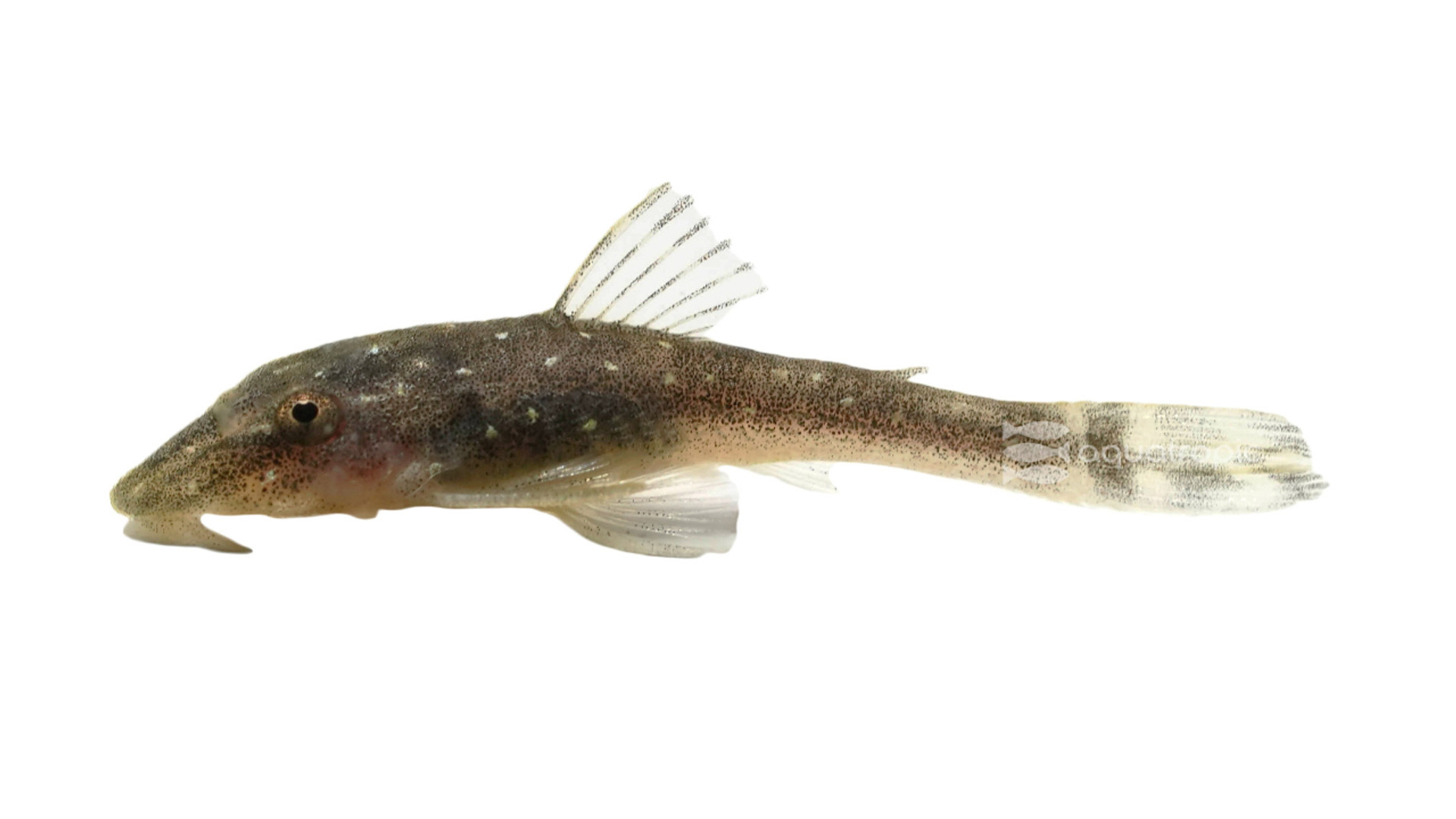Drops Of Gold

For people with small tanks, finding suitable fish of any kind can be a real challenge, especially when it comes to algae eaters. Most of the options available to the home aquarist are either too big or need to be kept in larger groups necessitating larger aquariums. A notable exception to this is the heavy staff favorite, the Gold Drop Dwarf Oto. Not a true Otocinclus cat, it belongs to the genus Paraotocinclus. Paraotocinclus genus fish have an adipose fin (the one between the dorsal fin and the tail fin) and Otocinclus doesn't; this is probably the best way to differentiate the two.
These gorgeous fish look quite a bit like Adonis Plecos but stay much smaller; Dwarf Gold Drops really deserve their name, the males getting not much bigger than an inch and a half long, and females topping out at just under two inches long. While we recommend having at least a ten-gallon tank to keep them, you could easily keep a couple in this volume, as long as you don't get past one specimen per five gallons, though we have seen densities much higher than this in aquariums with strong filtration. They are very peaceful even with others of the same species (or similar species), though they do not shoal like some other closely related armored cats. Tetras, Corys, even Discus and Guppies will be good tankmates for Gold Drop Dwarf Otos; just avoid very aggressive fish. These Otos are good candidates for keeping with other peaceful fish and inverts, though they may consume decorative shrimp juveniles.
In regard to water quality, these aren't incredibly picky fish, and stability of parameter will be more important than most of the numbers you are looking to mimic from their wild environment. They come from places that are clear, warm, and slow flowing. You'll want to try and mimic this in your aquarium environment; shoot for a pH that is within half of point of seven, clean and around 80 degrees Fahrenheit (as low as 77 is ok and as high as 85!). The challenge here is that water this warm does not hold oxygen very well, and so some effort will need to be put into this. We suggest forcing air into the system with pumps and stones.
These tiny Otos are great additions to planted tanks, helping to keep those plants free of algae, but unlikely to eat the plant matter itself. These fish will appreciate a display rich in driftwood and other graze-able surfaces. Substrate should either be too large for them to consume, or very fine as they will undoubtedly ingest some as they graze, and we want them to be able to pass it.
Feeding Otocinclus Gigante is generally quite easy. They are grazers in the wild, consuming primarily algae but also eating a surprising amount of invertebrate matter. Keep this in mind when choosing foods for them. The vegetarian portion of the diet can be emulated with algae wafers. The meaty portion of their diet can be pelletized, or very fine foods like thawed or fresh brine, tubifex, etc. They love bloodworms, but foods this protein dense should be fed sparingly. They do very well in house on Nutramar Algae and Color Boost Shots, which allow them to graze on a balanced diet, nearly perfectly set up for their dietary profile. In displays rich in algae, they will need less feeding than they do in a spotless aquarium.
Gold Drop Dwarf Otocinclus are available on an aquacultured basis, though there are often gaps in supply. As such, many of the fish still in your local LFS are wild caught, it also means that they are somewhat rarer than many other Amazonian algae eaters you may find in your Local Fish Store. We have no doubt that it won't be long before these fish are more regularly available as aquacultured specimens and their wild harvest is very sustainable. It is also very important to the wellbeing of the local fishermen who cannot compete with the domestic aquaculture operations that have replaced the wild harvest of many, if not most, popular aquarium fish.
Breeding Gold Drops, a very attractive, peaceful, useful fish, would be an excellent target for the home hobbyist looking to break into aquaculture. Otocinclus reach sexual maturity within a year and are brought into breeding condition by ensuring an overabundance of food or increasing the protein in their diet and raising the water temperature. Females lay eggs on plants and other natural substrates, the eggs hatch within a week or so. The fry feed on algae, and so success in rearing them would be enhanced by removing them to an alga rich, but competition poor environment. There are many online forums, blogs and websites that can help you guide yourself through this process.
If you're looking for a small, rare, peaceful fish that decimates algae, the Gold Drop Dwarf Oto is a great choice for you. They are hardy and pretty easy to keep, making them appropriate for hobbyists of all experience levels. They also offer the advanced hobbyist the opportunity to breed an ornamental fish that few, if any people are successfully breeding at scale at the time of this writing. Sound like something you're into? Head to your LFS and tell them that Aquatropic has some Dwarf Gold Drop Otos for your aquarium!